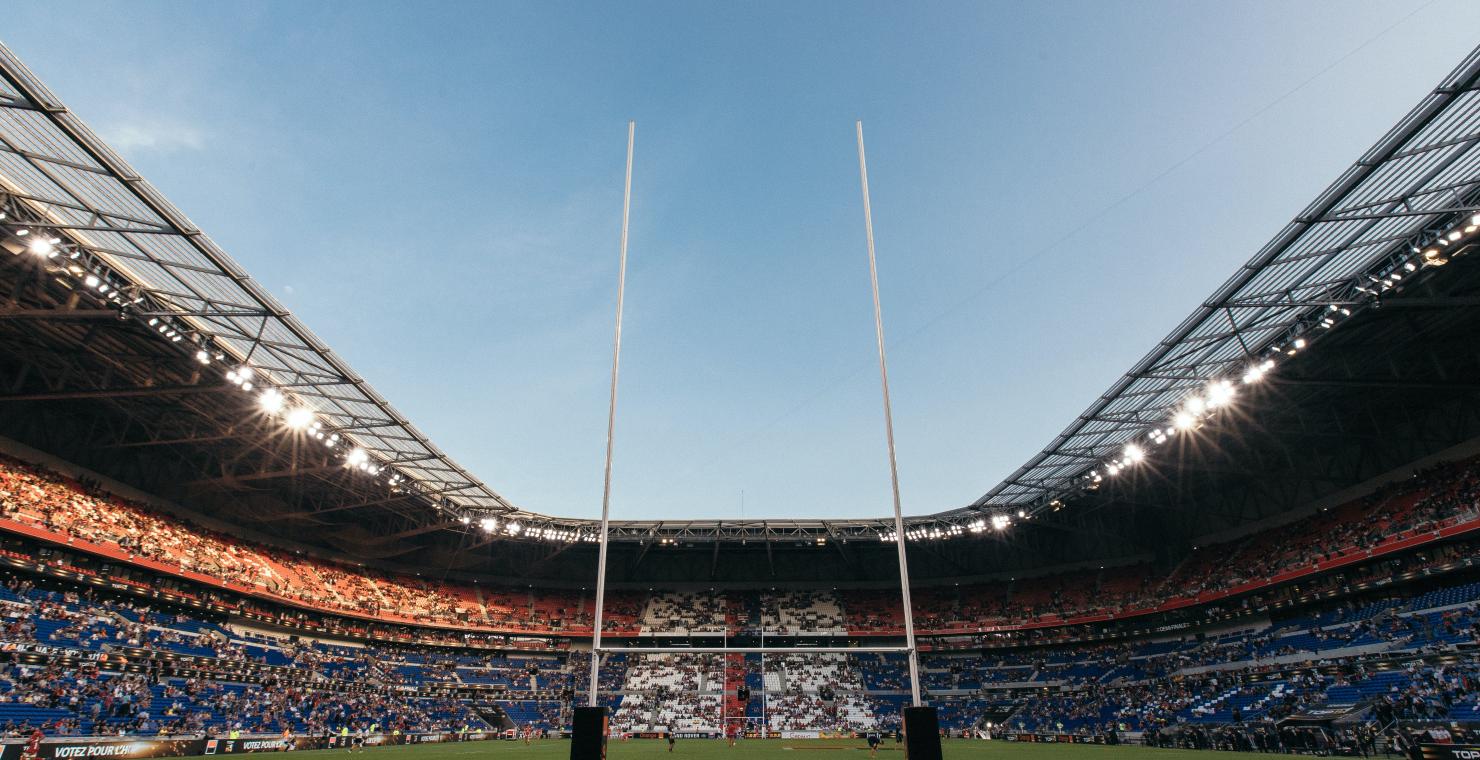
From the CEO: Word, Huey Lewis and The News
In this week's #MEAExpress, MEA CEO Peter McDonald dives into the wide world of sports and the business models top football clubs have been using to engineer success; sound advice which can be applied by organisations in the events sector who are struggling to rebuild or retain staff.
I was recently listening to some football talkback on the radio. The hosts and callers were discussing and comparing the year-to-date performance of various clubs as well as historical success, musing how some manage to consistently nail it where others constantly make air swings with the hammer.
I’m confident not all readers will be rugby league enthusiasts but ask that those who aren’t consider this just as colour in the fuller picture of this article. When I was editing, I tried to cut it back so please trust me that what’s still here is necessary context salient to the point of the message. If footy isn’t your thing, be brave and push through. It does end.
To set the scene the clubs being discussed primarily were the Melbourne Storm and Wests Tigers, with a few others receiving honourable mentions. For context, the Storm were built from scratch, entering the competition in 1998. The Wests Tigers are an amalgamation of two foundation clubs Balmain Tigers and Western Suburbs Magpies who began playing as a merged entity in 2000.
The Storm have been very successful. The currently underway season aside, they’ve won 4 premierships, been runners-up 4 times, won 5 minor premierships, 3 world club challenges and 1 wooden spoon (due to salary cap breaches) in their 24-season existence. The Wests Tigers’ 22 years have delivered 1 premiership and none of the other benchmarks.
Its fair to say that over the period of their existence, Melbourne have become the club that others aspire to emulate. When further factoring finals appearances, their sustained success on the field is unmatched. Aside from the year of salary cap breach when their accrued points were taken from them resulting in a 16th of 16 ladder position, since 2003 they haven’t finished lower on the table than 6th. Since inception, they’ve only not played finals football in three seasons including the ‘salary cap’ year.
At the other end of the scale, the Wests Tigers have played finals football just 3 times. They’ve finished shy of the finals – 9th or 10th – on 9 separate occasions. The other 10 seasons they’ve finished worse.
Very different outcomes over similar longevities.
These days local juniors don’t constitute the bulk of any club’s player group as it once did. This means there’s a highly transient ‘workforce’ where players are choosing where to play. In 2022, all clubs must operate within the same $9.118m base salary cap for their top 30 players.
So the bottom line question is that if every club has the same amount of money to spread over the same number of players, how can two clubs have such vastly different performance metrics? Why do players choose to sign with Melbourne and not Wests Tigers? Two of the key differentiators identified in the radio talkback were professionalism and culture.
Wests Tigers are now 2 wins and 5 losses for 2022. The week before their first win, so in their 5th consecutive loss, the Tigers were smacked by Cronulla. What I found most difficult to process about the game in this context was that as the players were shaking hands after the game, Wests Tigers players were smiling broadly and laughing and patting the Cronulla players on the back. Whilst I am one for ‘what happens on the field, stays on the field’, that sort of behaviour is something you’d never see from Melbourne. It doesn’t belong in their culture or attitude. They’ll be sportsmanlike and shake hands, but their body language after a loss irrespective of the margin reveals a genuine discomfort with underperformance.
Melbourne and other more successful clubs have invested in systems that develop their personnel as both players and people. Most if not all clubs these days have high performance coaches who grow the players’ technical skill sets through scientific analysis and drills. But where clubs like Melbourne excel is in the investment they make in the players as people.
From their coach – who’s been at the helm since 2003 – down, there’s a very high retention level. Former Australian captain Cameron Smith and fullback Billy Slater, both native Queenslanders, were both one club career players with the Storm. People want to be there because they’re treated well. I’m sure they were paid well too but suffice to say each of these men could have commanded much more money at other clubs. When the Storm were facing salary cap breach investigations, I remember being impressed watching them march out as a group to face the media.
Conversely, Wests Tigers have had 5 coaches over the same period and every other day there’s media speculation about how long it will be until the current coach (since 2019) gets turfed. The club isn’t coming out and having his back to shut the speculation down. Not doing so only fuels it. What sort of culture does that suggest exists? Especially in the Melbourne context.
The Penrith Panthers were promoted to the league’s first division in 1967 and were for many years the competition easybeats, often referred to in their brown and white strip days as the ‘chocolate soldiers’. They’re now one of the competition’s heavyweights. But they didn’t win their first title until 1991 and now have 3 to their name, have twice been runners up, and laid claim to 4 minor premierships. They’re currently leading this season’s ladder. As the club ‘grew up’ to become more professional, one of the strategies employed was to build unity and connection amongst the players. As a group they would be taken away from the football environment and participate in activities as people not footballers. When coaching Canterbury-Bankstown, coach Chis Anderson (later a Melbourne coach) would have a weekly lunch for players with the rule that they could not talk about football. This allowed the players and club personnel to get to know one another as people not just teammates. It established connection. It was a recognition that they were more than just ‘workers’. It was an investment in them. Anderson’s 8 years as Bulldogs coach duly delivered 5 finals appearances, of which one led to a premiership and another a grand final appearance.
So how does all of this relate to our industry and now? Good and talented people want to be in a place where they get looked after. When that happens, they end up giving more of themselves. When a duty of care or recognition is demonstrated to someone as a person as opposed to simply an employee entitlement like their salary – and with action as opposed to words – that person will be motivated to achieve more of that, so they end up stepping even further up.
I regularly hear frustration expressed from sector business leaders about the current challenges being presented in recruiting to rebuild their businesses, as a result of so many people having left the industry (international workers aside). My encouragement is for businesses to replicate the Storm’s business model. With a somewhat blanker canvass than what you had a couple of years ago, before they come on board build and design a culture and systems intended to demonstrate to the people you bring in that they’re valued and implement it when they do. Put the horse before the cart. If there’s trouble getting good people, be positioned to keep them once you do.
This onus is regardless of whether a person’s leadership capacity is supervisory, managerial, executive or directorial. The obligation is on the leader to both professionally and personally develop, grow and reward their people irrespective of their place in the organisational hierarchy. You’ll reap from your crop what you apply to it. If you apply poison, it’ll kill. If you do nothing, you’ll get weeds and poor quality. If you add fertiliser, you’ll get abundance. And remember that not every output is metrically measurable. Some contributions and benefits people add to a business are intangible and not obvious at the time, but highly apparent once they’re gone. Nobody is irreplaceable, but some people are not replicable.
Unless you’ve been living under a rock, you’ll probably be aware of Shane Wane’s recent passing. From all reports Shane lived the good life and enjoyed plenty of life’s spoils. The MCG’s Great Southern Stand has been renamed the Shane Warne Stand in recognition of his achievements and contribution to Australian cricket. That’s a wonderful honour, but you know what? He never got to enjoy that recognition – and he’s the one person who should have most. My point: celebrate and recognise your people in the moment its possible, and alongside them. Otherwise, it can be too late for them to experience the value fully perceived of them.
During busy and tough times people endure the lurks of their jobs. Every job has them. Among many things they do the hours, cop the complaints, feel the stress, bear the stretch, and prioritise the job above their personal life. So when the opportunities to grant the perks come – every job has these too – find the way to say yes. Ensure that balance is embedded in your culture. Given the past couple of years maybe consider if perhaps a correction of this nature is overdue to make your team feel like valued people as opposed to simply employees. Who wins then? Everyone.
This wasn’t an easy message to find a song to match, but I think Huey Lewis and the News probably come closest:
The power of love is a curious thing
Make a one man weep, make another man sing
Change a hawk to a little white dove
More than a feeling, that's the power of love
and
It don't take money, don't take fame
Don't need no credit card to ride this train
Tougher than diamonds and stronger than steel
You won't feel nothin' 'til you feel
You feel the power, feel the power of love
That's the power, that's the power of love
You feel the power of love
You feel the power of love
Feel the power of love
If this message inspires you to spread some sugar, I hope you experience the full power of returned love.
Source:
Song – “The Power of Love”
Album – “Back to the Future: Music from the Motion Picture Soundtrack”


